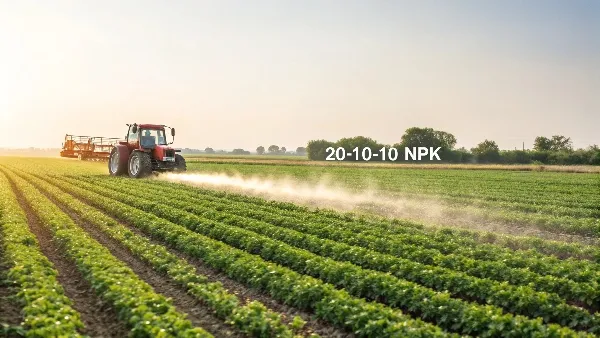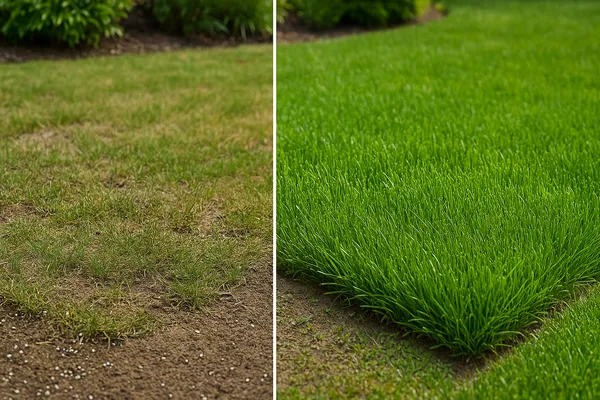Avoid your inquiry is delay response, please enter your WhatsApp/Skype along with the message, so we can contact you at the very first time.
We will reply you within 24 hours. If for urgent case, please add WhatsApp/WeChat:
Warning: Undefined variable $public in /www/wwwroot/lvfertilizer.com/wp-content/themes/hyhadmin/header.php on line 350
Warning: Trying to access array offset on value of type null in /www/wwwroot/lvfertilizer.com/wp-content/themes/hyhadmin/header.php on line 350
,. Or call
Warning: Undefined variable $public in /www/wwwroot/lvfertilizer.com/wp-content/themes/hyhadmin/header.php on line 350
Warning: Trying to access array offset on value of type null in /www/wwwroot/lvfertilizer.com/wp-content/themes/hyhadmin/header.php on line 350
directly.
Many fields underperform because the fertilizer plan is guesswork. That guess starves crops of key nutrient supply, shrinking yield and profit. A focused 20-10-10 fertilizer program fixes the gap fast—bringing back dark green color, steady plant growth, and reliable returns.
NPK 20-10-10 fertilizer supplies 20% nitrogen, 10% phosphorus, and 10% potassium for vigorous leaves, steady root development, and resilient plant health. Use a soil test to confirm need, then apply evenly; the high nitrogen content drives quick green-up while balanced P and K support structure and stress defense.

The numbers on a fertilizer bag form the n-p-k ratio (the npk ratio): nitrogen, phosphorus, potassium percentages by weight. Reading the fertilizer analysis is like reading a nutrition label for crops. Understanding the numbers on a fertilizer bag lets you choose a specific fertilizer that matches plant needs and the specific needs of your plants.
| Blend | N (%) | P (%) | K (%) | Typical Use & Benefit | Notes |
|---|---|---|---|---|---|
| 20-10-10 fertilizer | 20 | 10 | 10 | Rapid foliar push, dense turf, leafy vegetables | High nitrogen content for fast color |
| 10-20-10 fertilizer | 10 | 20 | 10 | Early rooting, transplants | Strong early root development |
| 15-15-15 fertilizer | 15 | 15 | 15 | General purpose balanced fertilizer | Even feeding |
| 10-10-10 fertilizer | 10 | 10 | 10 | Maintenance / mixed beds | Moderate steady feed |
Expert Note: The first number in an npk label is always N; that is why the nitrogen content in 20-10-10 fertilizer is the immediate foliar driver.
A single fertilizer bag gives you a snapshot of potential. Selecting the right fertilizer is important for overall plant health and profit stability.
Compared with a balanced fertilizer, 20-10-10 fertilizer puts extra emphasis on leaf mass. Higher nitrogen speeds chlorophyll formation; phosphorus feeds energy transfer; potassium sharpens stress tolerance. This fertilizer product is often the fertilizer blend chosen right after a cool spring or drought when a quick rebound is needed.
Key distinctions vs others:
A well-fed lawn resists weeds and wear. Using a high nitrogen lawn fertilizer early in active growth thickens the canopy and protects soil moisture. The health of your lawn hinges on steady root feeding and measured shoots: too little fertilizer slows cover; too much fertilizer can lead to soft growth.
Practical Schedule (Temperate Zone):
Always apply the fertilizer after calibration; mis-spreads waste the amount of fertilizer and risk stripes.
Case: A sports facility shifted to 3 split applications of 20-10-10; surface hardness stabilized and irrigation cycles dropped 10%.

Once broadcast, prills dissolve; nutrient ions move within the plant via roots and xylem:
Correct timing plus moisture lets fertilizer sources unlock energy in plant roots and above-ground biomass. Mis-timed fertilizer wastes value; well-timed fertilizer can help resilience under heat, salinity, or traffic.
High N alone can shade out root depth. That is why a soil test is core before applying fertilizer or any synthetic fertilizer supplement. It reveals reserve nutrient pools so you target only gaps. After establishing a strong root base with a rooting blend, a shift to npk 20-10-10 fertilizer drives canopy. This sequence protects overall plant health and steady carbohydrate flow.
| Goal | Preferred Blend | Why |
|---|---|---|
| Quick canopy fill | 20-10-10 fertilizer | High N for speed |
| Seedling anchoring | 10-20-10 fertilizer | More P for early plant roots |
| Mid-season balance | 15-15-15 fertilizer | Even distribution |
| Finish quality | 10-10-10 fertilizer | Controlled maintenance |
Liquid fertilizer offers near-immediate leaf response; granular fertilizer provides simpler logistics and even coverage over hectares. A single type of fertilizer rarely solves the entire season—layering is smarter.
| Feature | Liquid fertilizer | Granular 20-10-10 fertilizer | Slow-release fertilizer (coated) |
|---|---|---|---|
| Response | Fast (1–3 days) | Medium (5–10 days) | Extended (8–12 weeks) |
| Labor | Mixing + sprayer | Spreader only | Fewer passes |
| Leaching risk | Higher if over-sprayed | Moderate | Lower |
| Best Use | Rescue / foliar | Routine base feed | Labor & loss reduction |
Add coated forms when labor is tight or rainfall leaching risk is high. One carefully chosen fertilizer blend integrating coated N reduces pass count while avoiding the surge that fertilizer can lead to lodging.
Explore custom and slow-release fertilizer solutions for tailored coating thickness.
Every growth stage brings new plant needs. You only apply npk at rates demanded by that stage to support overall plant response and limit waste.
| Growth Stage | Primary Need | Supporting Phrase |
|---|---|---|
| Establishment | root development & stand | Moderate P + sufficient N |
| Vegetative push | Leaf area & dry matter | Elevated N (20-10-10 fertilizer) |
| Pre-bloom | Energy shift | Balanced or higher K |
| Reproductive | Seed / fruit fill | Controlled N, adequate K |
| Finish | Maintain color & integrity | Light feeding / polishing |
One calibrated pass of fertilizer at the wrong window costs more than a precise dual-split strategy. Correct timing is important for overall plant health and consistent quality across a wide range of plants.
Quality gear and habits protect margins:
Where risk of burn or leach is high, combine a base of coated prills with a light soluble top-up. If corrections are needed mid-season, a targeted foliar fertilizer dose or reduced-rate pass prevents salt layering.
Sustainability goals matter in bids and NGO tenders. An organic fertilizer addition builds microbial habitat; a selective synthetic fertilizer overlay corrects exact deficits. Smart blending of both fertilizer sources creates efficiency. A single sentence to remember: The right synergy of organic base plus precision mineral fertilizer often unlocks soil structure plus yield.
When clients ask if fertilizer can be used in sensitive zones: yes—provided buffers, split rates, and correct timing limit runoff.
For ornamental beds and flowering plants, transition from npk fertilizer early vigor feeding to K-support when buds form. A single pre-bloom pass with measured P and K supports petals and aroma.

Need citrus fertilizer strategy? Early vegetative flush favors a modest 20-10-10 start, but fruit set prefers higher K relative to N. Measured adjustments keep juice solids up.
Fertilizer options widen as projects diversify: coated, soluble, stabilized, chelated micronutrient add-ons. Each fertilizer product role is clarified through clear goals, not habit.
Before you apply the fertilizer, run through this quick expert checklist:
Remember: Thoughtful scheduling plus record keeping makes future adjustments data-driven.
How do I know the right fertilizer rate for a new turf area?
Start with the soil test, then select a modest 20-10-10 rate; adjust after visual response and clipping yield.
Why use a coating instead of just more passes?
A coating moderates release; fewer passes lower labor cost and protect plant health under heat stress.
Can a single bag of fertilizer serve multiple crops?
Yes, but only if its fertilizer analysis fits all; often a specific fertilizer is better for high-value beds.
Is there a danger if I keep pushing N?
Excess fertilizer application beyond crop uptake can cause weak tissue; moderate splits safeguard plant health and productivity.
What if I want deeper color but not more mowing?
Use a spoon-fed strategy: smaller, more frequent applications of 20-10-10 rather than one heavy surge so fertilizer energy becomes density, not lift.
Why does 20-10-10 work so fast?
High soluble N dissolves rapidly; energy transfer follows, accelerating leaf area and early overall plant health gains.
Partnering with a manufacturer lets you customize prill size, coating thickness, and packaging. Our npk 20-10-10 fertilizer manufacturing line offers traceable batches and private-label flexibility. With that, fertilizer can help smooth logistics, assure consistency, and shorten lead times.
Tip: Always run a soil test before application. Matching the N‑P‑K ratio to your field conditions maximizes nutrient‑use efficiency and protects overall plant health.